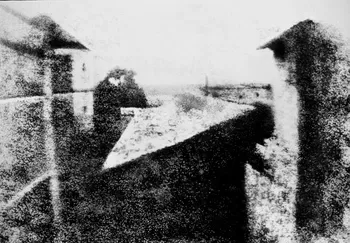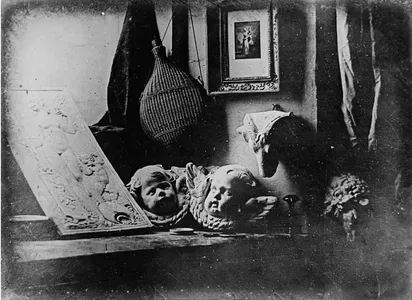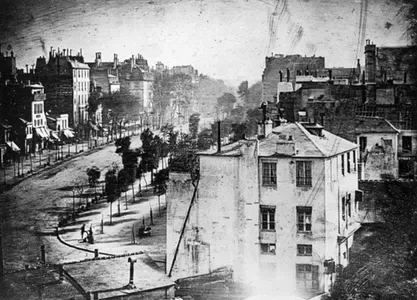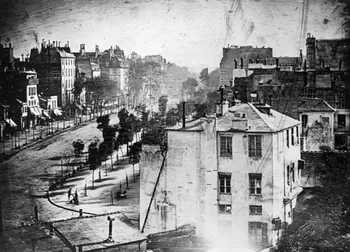The invention of the daguerreotype, one of the earliest forms of photography, is attributed to the French artist and inventor Louis Daguerre. His journey toward this groundbreaking photographic process was a culmination of scientific curiosity, artistic innovation, and years of experimentation.
Born in Cormeilles-en-Parisis, France, in 1787, Louis Daguerre initially pursued a career as an artist and scenic designer. His talents led him to work on diorama paintings, which were large-scale theatrical panoramas that aimed to create immersive and realistic visual experiences for audiences.
Early Experimentation and Niépce Collaboration
Louis Daguerre began his experiments with photography in the early 1820s. He was initially influenced by his collaboration with another French inventor, Joseph Nicéphore Niépce, who had been working on the development of light-sensitive materials and image capture.


In the early 1820s, Niépce had been working on a process known as heliography, which involved capturing images on polished metal plates coated with bitumen of Judea. Daguerre’s early attempts involved various chemicals and materials, including bitumen-coated plates.
Although this technique was groundbreaking, it had limitations, including the long exposure times required and difficulties in producing consistent and high-quality images.
Daguerre’s partnership with Niépce was instrumental in his journey toward photography. Together, they worked on different photographic methods, often testing their processes over extended periods. Their collaboration marked a key stepping stone in the evolution of photography.
Paris Sightseeing Tours with Paris CityVision
Refinement of the Daguerreotype
Tragically, Niépce passed away in 1833, leaving Daguerre to continue their work alone, determined to enhance the photographic process.
He experimented with different chemicals, including iodine and mercury, to create a light-sensitive surface on silver-coated copper plates. Daguerre’s determination to improve upon Niépce’s heliography process ultimately led to the development of the daguerreotype.
To capture images, Daguerre used a camera obscura, a device with a lens that projected light onto the prepared plate. The exposure times in these early experiments were quite long, often lasting for several minutes or even hours.
In the laboratory
After exposing the plate in the camera, Daguerre used mercury vapor to develop the latent image. The fumes interacted with the exposed silver particles, creating a visible image on the plate’s surface. This process was both delicate and dangerous due to the toxic nature of mercury.
Daguerre made several key breakthroughs in the late 1830s. One of the key issues of the daguerreotype was the permanence of the images. Unlike earlier photographic processes, the daguerreotype created images that were not susceptible to fading or deterioration over time.


He discovered that exposing silver-coated copper plates to iodine vapor created a light-sensitive surface. This surface could be exposed in a camera obscura, a precursor to modern cameras, to capture an image.
Subsequent development of the exposed plate with mercury vapor produced a visible image. This image, etched into the plate’s surface, was permanent and remarkably detailed.
Daguerre perfected his photographic process and patented it in 1839. He revealed his invention to the world, and it quickly gained widespread attention and acclaim.
Public Debut and Global Impact
Daguerre’s first public demonstration of the daguerreotype took place in Paris in 1839, showcasing the incredible detail and clarity of the images his process could produce.


In 1839, Daguerre publicly unveiled the daguerreotype process. His announcement in France and later globally generated enormous excitement and interest.
The daguerreotype represented a revolutionary leap in visual representation. It allowed for highly detailed and realistic images that could be reproduced, marking a significant turning point in the history of art, science, and communication.
The daguerreotype process rapidly spread around the world, leading to a revolution in visual documentation. It marked the beginning of modern photography.
He signed an agreement with the French government, allowing the French citizens to freely use the daguerreotype process, while the government provided him with a pension. This move facilitated the global adoption of the daguerreotype.
A Lasting Legacy
Louis Daguerre’s pioneering work in the field of photography left an indelible mark on history. His dedication to improving and popularizing the daguerreotype process laid the foundation for the photography we know today.
The story of Louis Daguerre making his early photographs represents a fascinating chapter in the history of visual art and technology. His passion for perfecting the art of photography led to the creation of enduring images that not only captured the faces and scenes of his time but also transformed the way we see and understand the world.
Daguerre’s legacy continues to influence the art and science of photography to this day. Louis Daguerre’s legacy extends beyond the invention of the daguerreotype. His work laid the foundation for modern photography and led to the establishment of the first practical and widely accepted photographic process.
His dedication to merging art and science transformed the way we capture and preserve our visual history, leaving an indelible mark on the world of photography that continues to influence it today.
Daguerre passed away in 1851, but his invention lives on as a testament to the power of human innovation and creativity.
The process of Louis Daguerre making some of his early photographs was a pioneering journey filled with experimentation, innovation, and dedication to capturing images using the daguerreotype technique.
Daguerre’s relentless pursuit of perfection in the nascent field of photography eventually led to the creation of stunning early photographs.
Further reading
Related stories:
The beginning of photography: heliographs and daguerreotypes
Guide to Collecting Vintage Film Cameras
Glossary of photography terms for auction & collectors – with examples
FEATURE: Collecting Old & Vintage Photographs
Life Magazine’s Innovative Photography at MFA Boston
NASA’s Famous Blue Marble Photo Is 50 Years Old
Man Ray’s love-hate relationship with Hollywood






